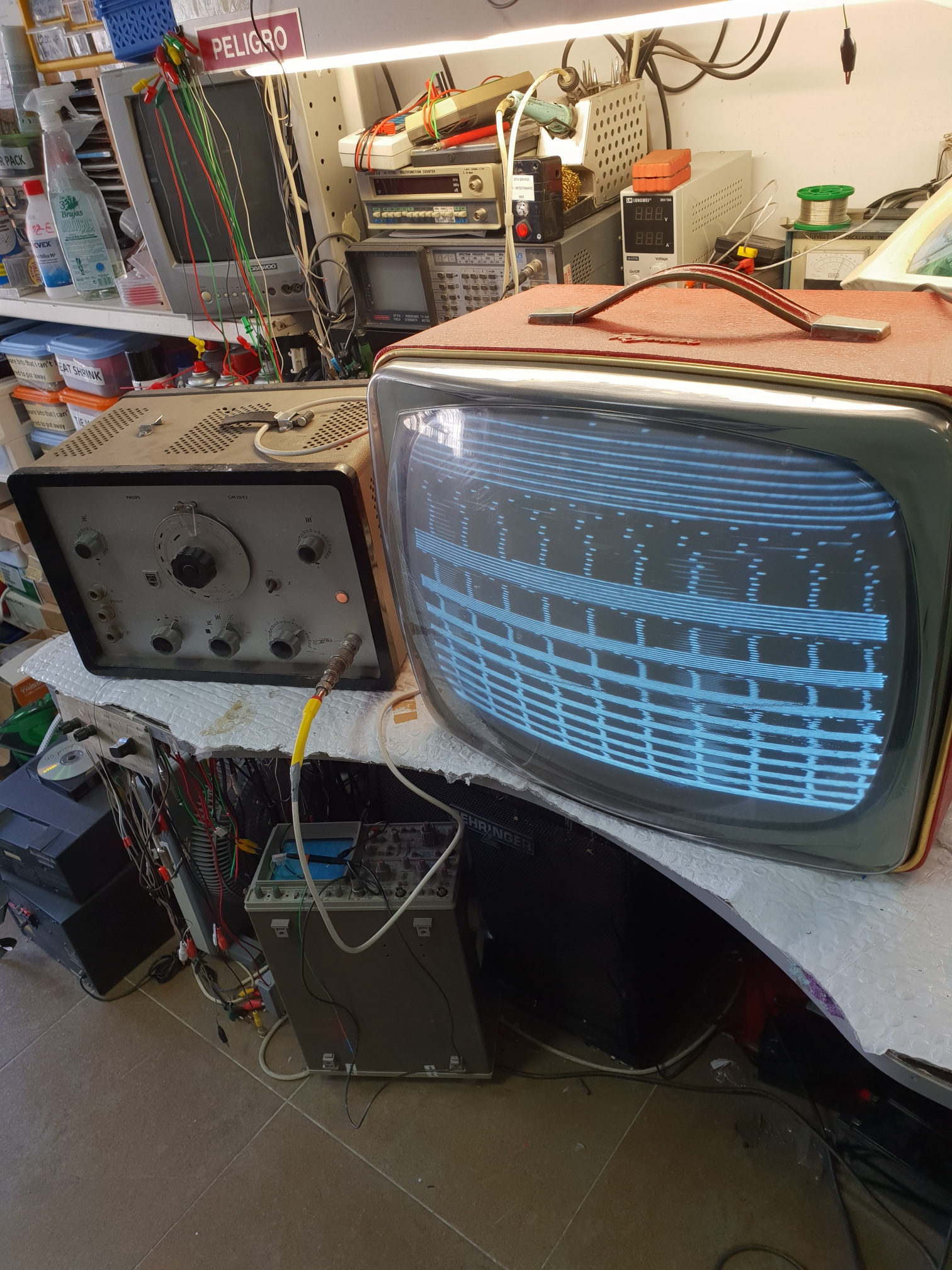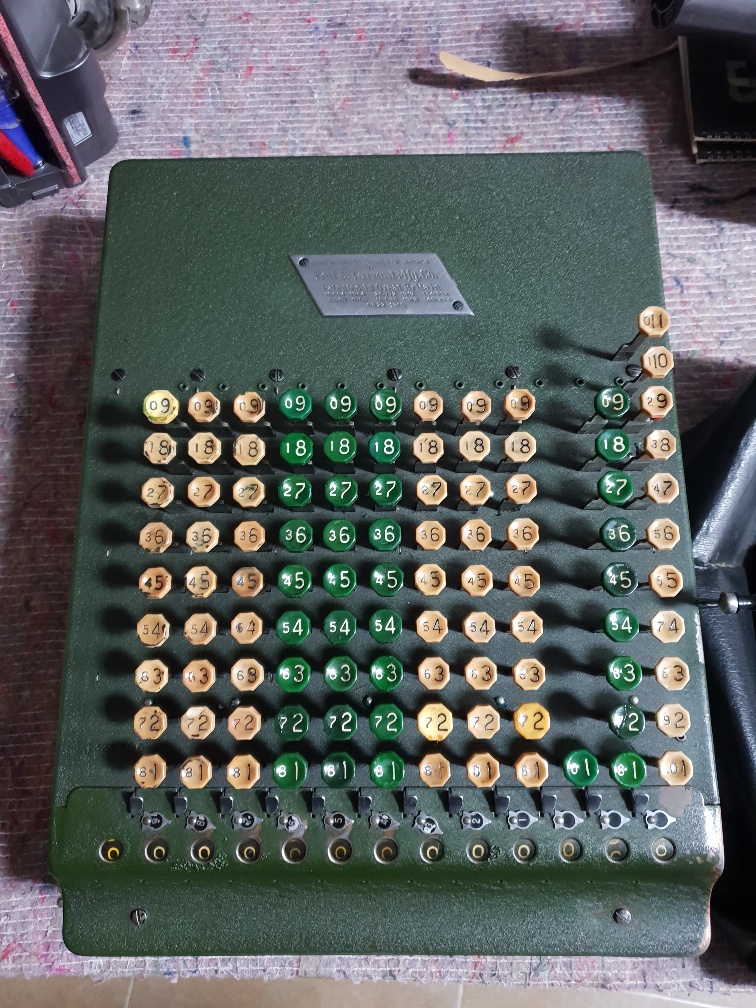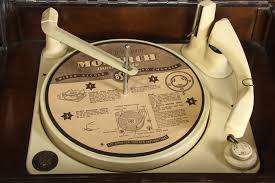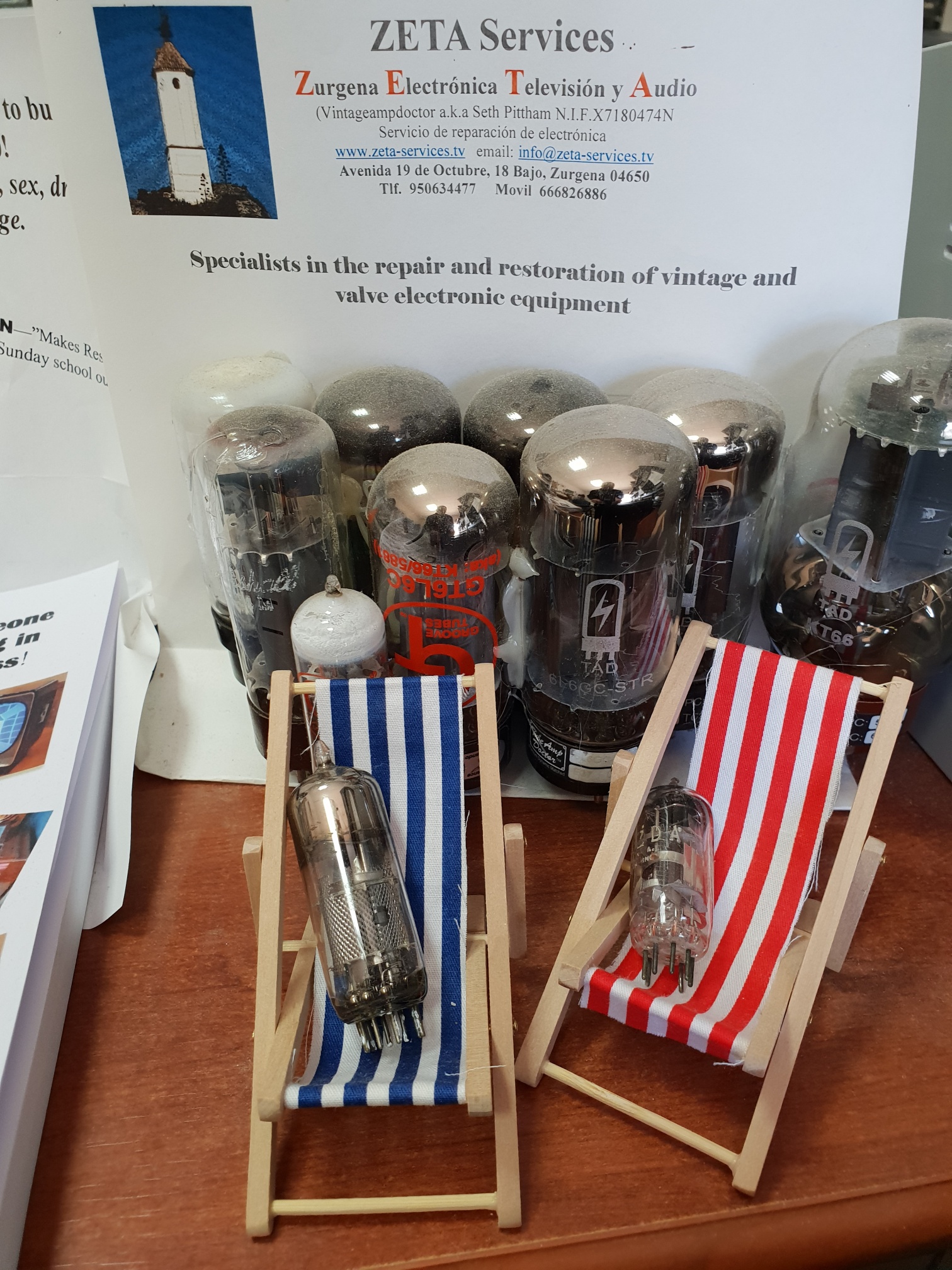
In the 30s John Logie Baird was playing with his version of television. This was an electro-mechanical system and consisted of a metal disc with holes punched in it spinning in front a neon tube. The resulting picture was 3″ square, orange and viewed through a magnifying glass. This machine would hopefully run in sync with the camera in the studio which again had a massive spinning disc which scanned the object being viewed. I will write about this separately one day. You had to connect this contraption to your radio, tuned into the shortwave TV transmission. Your radio had to have an external speaker connection and enough output to provide the synchronization pulses which kept the spinning disk in step with the camera at the studio. The motor was mains driven and it’s approximate speed adjusted carefully by a rheostat until the sync pulses could stabilize the speed. The resolution was 30 lines! Perfectly acceptable for watching East Enders or Corrie..
The BBC and EMI decided that this was not good enough and eventually settled for 320 or 405 line system, all electronic. My hero Alan Blumlein was instrumental in the development of this system. 405 lines won and that standard lasted from 1939 ’till 1985! Logie Baird never recovered from this.
Early sets had a 5″- 9″ round tube. If you wanted a bigger picture, you hung an oil filled magnifying glass in front of the set. It gave a slightly bigger screen, but you had to sit directly in front! Most of these sets derived the high voltages needed for driving the picture tube, directly from a large mains transformer. This had several windings generating some 5,000 volts. The problem here was that the transformer was prone to failure as a result of valves and capacitors dying. Also, this setup could generate the high voltage at enough current to give the service engineer an early entry ticket to meet his maker. The chap who tinkered with old radios had a wake up call. Alan Blumlein again came to the rescue and devised a smaller transformer setup known as flyback. This was all part of the line scanning circuit and run at 10,250 Hz. This meant the transformer was much smaller and all very efficient. You could now hear the 10,205Hz line whistle, which was a big comfort to the service engineer. It was really the forerunner to the switch mode power supplies of today. You could get a nasty shock, but you would normally be home for tea.
Up until ’57, you only had BBC, then came ITV. The war stopped TV production and transmission. German bombers would use the powerful signal from transmitters at Alexandra Palace as a beacon to bomb London. After the war, everything started again and the Coronation was responsible for a huge sale in TVs and that set the scene.
In the 50s, better and larger tubes were available. 12 and 17″ was common. Watching TV was fun. Turn the sets on about 10 mins before your program (6-5 Special!) to allow the set to warm up and settle down. Sets in those days bristled with controls that could tweak throughout the evening. Vertical hold to stop the picture rolling up and down, horizontal hold (line hold) to stop the picture shooting from one side of the screen to the other. Height, Width, linearity and so on. Brightness and contrast of course. All of these needed playing with from time to time depending on how warm your house was and what the electric supply was like. In the winter, it was common to have 20% less mains. This caused your picture to shrink, roll. It was fun! The more expensive sets had a “white spot suppressor” control. This was supposed to get rid of interference caused by trams and cars with dodgy ignition.
Now, if the set went wrong, you would have all heard the “repair man” say, with a sharp intake of breath “it’s ya picture valve me duck”. In fact, there was no such thing as a picture valve. Picture tube (screen), yes. The so called “picture valve” was normally the little EHT rectifier, which gave the high voltage needed for the screen. In early sets, this was a little undernourished valve, EY51 by name, which sat quietly on top of the line output transformer. It had a hard life and expired regularly. Changing this chap took about 15 mins. and it cost 10 shillings plus tax. The grubby repair man in his Ford Pop’ van, would keep the set for a week, scratch the highly polished cabinet and charge you £11.2s.6d telling you he had stuck a new tube in the set.
’64 saw the arrival of UHF 625 line transmission. The sets were more expensive, you had to change your aerial and could only get a picture if in the right area. We now had TVs that had to receive two types of TV signal. The two standards, 405 line and the higher definition 625 line standard required the electronics in the TV to be switched over when 625 UUF was needed. The changers effected the line timebase, frame timebase, video and audio circuits, not forgetting the tuner. All this was achieved by two or more “system switches”. These were normally long wafer switches with multiple contacts to make all the changes. A 405-625 lever would be slid back and forth. The poor TV would hiccup, pop, buzz and get all upset when the switch was operated and had to have an emotional moment to settle down. Sometimes the switch bank would get stuck between standards and all hell would break loose. The screen would go blank, sound would crackle and if you were unlucky, that would be accompanied by a smell of burning. You now had an additional few control on the back of the set to play with.
Then, ’67 and we had colour! Sets would cost £350 (a family car was £600ish). You had to be a proper engineer to fix these. The EHT section (nasty high voltage 25,000 volts) was contained in a metal screened tower housing big beefy valves, PY500, PL509,PD500, EY501. The latter two gave of X rays when working. You didn’t stand in front of this lot when working on the set with the metal safety screen off for obvious reasons. It was waist high and would make your gentleman’s area sterile! These sets were prone to the odd bonfire. Philips, PYE and GEC were great for this but all fun. Sets in the 70s used a mix of valve and transistors. They were starting to get more reliable and that killed off the rental shops as people were now happier to invest in something that lasted a year or so before going pop. I refurbished many of these GEC sets in the late 70s and early 80s. Replace all the known nasty bits and the set went on for another 5 years. You could always tell what a household had for Sunday lunch. The high voltages attracted dust, smoke and grease. A set on the bench would smell of roast lamb and Embassy no.5. A combination of smells I will never forget!








